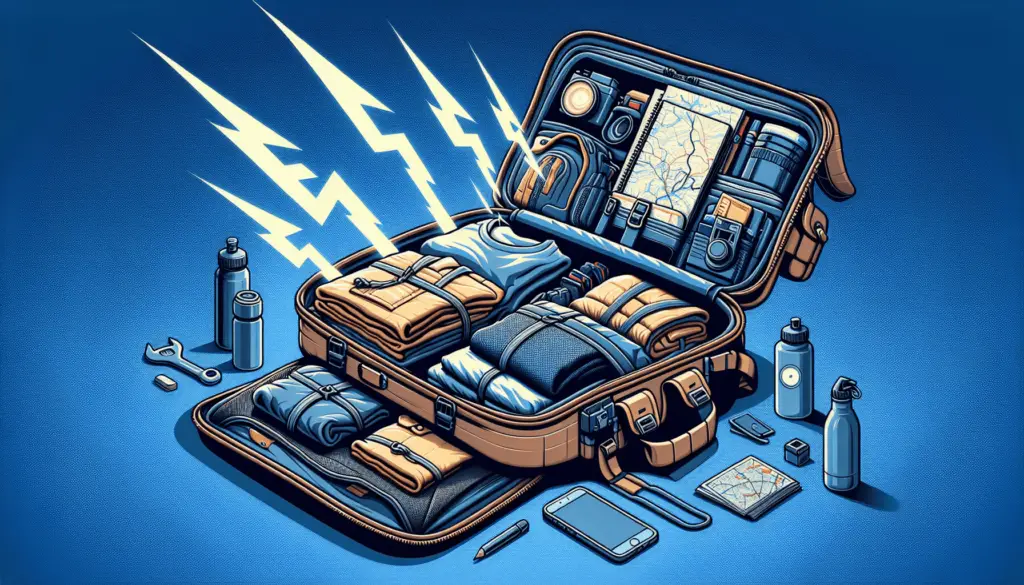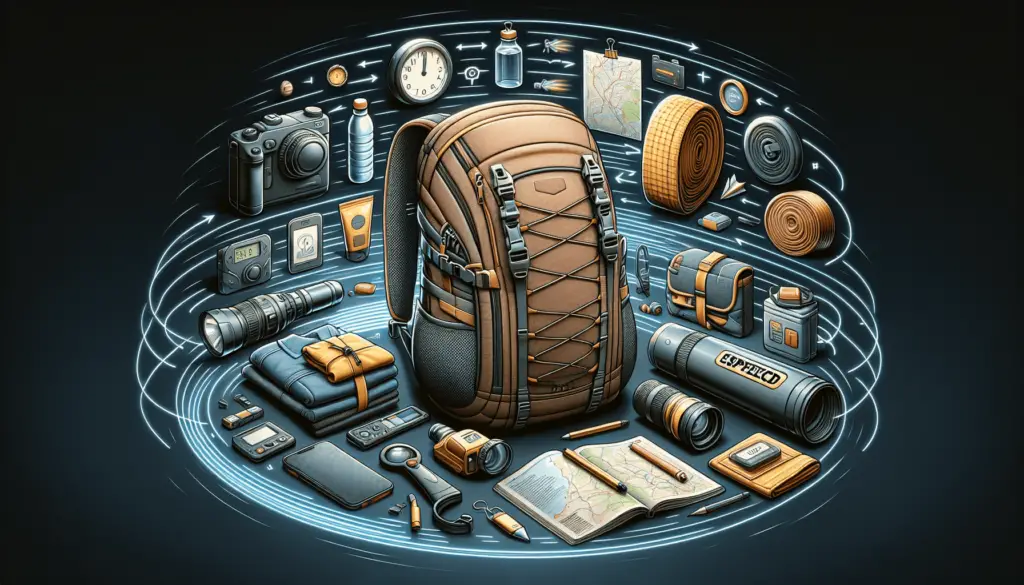Are you tired of spending extra time and energy rummaging through your backpack, searching for that one item you need? Look no further, because we have the ultimate guide on how to pack a backpack for efficiency and speed. Whether you’re preparing for a day hike, a weekend camping trip, or a long-term backpacking adventure, these tried and tested tips will ensure that everything is organized, easily accessible, and ready to go when you need it. Say goodbye to digging through a jumbled mess, and hello to a streamlined and efficient packing system that will save you both time and frustration.

Choosing the Right Backpack
Choosing the right backpack is crucial for a successful and comfortable journey. When considering which backpack to purchase, the size and capacity are important factors to take into account. Think about the length of your trip and the amount of gear you will need to carry. A larger backpack may be necessary for longer excursions, while a smaller one is suitable for shorter trips. Make sure the backpack can accommodate all your essentials without being too bulky or too small.
In addition to size, look for backpacks with multiple compartments and pockets. These features offer excellent organization options, allowing you to separate and access your items easily. Compartments enable you to categorize your gear, minimizing the chances of losing or misplacing items during your trip. Pockets can be useful for storing smaller items like keys, a phone, or a map, ensuring quick and convenient access.
Another essential aspect to consider is the comfort and fit of the backpack. A poorly fitting backpack can cause discomfort and strain on your body, hindering your overall experience. Look for backpacks with adjustable straps to distribute the weight evenly across your shoulders and back. Furthermore, padded shoulder straps and a breathable back panel contribute to additional comfort during those long hikes or walks. Remember, finding the right backpack is crucial to ensure a pleasant and enjoyable journey.
Organizing Your Gear
When it comes to organizing your gear, proper categorization is key. Before you start packing, create categories for different types of items. This can include clothing, toiletries, electronics, and miscellaneous items. By organizing your gear into categories, you can easily locate what you need without rummaging through a messy backpack.
Next, consider placing frequently accessed items in easy-to-reach compartments. This ensures that you can quickly and conveniently grab essentials like your phone, wallet, or snacks without having to unpack your entire bag. It’s also helpful to use packing cubes or stuff sacks for smaller items. These containers keep similar items together and make it easier to find what you need, especially when you’re on the go.
Packing Techniques
When it comes to packing your backpack efficiently, certain techniques can simplify the process and maximize space. One such technique is rolling clothes instead of folding them. Rolling not only saves space but also reduces wrinkles in your clothing. Additionally, using compression straps or packing cubes can help further save space by compressing your clothes.
Consider placing heavier items close to your back for better weight distribution. This helps maintain balance and prevents strain on your shoulders and back. By placing heavier items in this position, the load is evenly distributed, reducing discomfort during your journey.

Optimizing Weight Distribution
Optimizing weight distribution is crucial for a comfortable and balanced backpack. To achieve this, make use of the hip belt. The hip belt helps transfer the weight of your backpack from your shoulders to your hips, the strongest part of your body. By properly adjusting the hip belt and making sure it sits snugly on your hips, you can alleviate strain and discomfort in your back and shoulders.
When packing your backpack, place lighter items at the top and towards the front. This helps maintain a better center of gravity and prevents your backpack from pulling you backward. Distributing weight properly improves your balance and reduces the risk of tripping or straining your back.
Additionally, it’s important to balance the weight from side to side. Uneven weight distribution can throw off your balance and cause discomfort. Take the time to adjust and redistribute items to ensure even weight distribution throughout your backpack.
Strategic Placement
Strategic placement of your belongings can protect fragile items and provide easy access to frequently needed items. Secure fragile items or electronics in padded compartments to prevent damage during your journey. The padding adds an extra layer of protection, keeping your valuables safe and intact.
It’s also useful to pack a rain cover in an easily accessible pocket. Sudden showers can occur, and having a rain cover readily available can protect your backpack and its contents from getting wet. Additionally, keeping frequently needed items like water bottles or snacks within reach ensures quick and easy access throughout the day.
Consider Accessibility
Accessibility is key when packing your backpack efficiently. Pack items you will need throughout the day in external pockets. Items like sunscreen, a water bottle, or a lightweight jacket can be easily accessed without having to open your main compartment repeatedly.
Place items needed at each rest stop towards the top of your pack. This way, you can quickly grab what you need without having to empty your entire backpack. Organize smaller items inside compartments for easy access as well. By keeping similar items together, you can quickly locate what you need and prevent your backpack from becoming a disorganized mess.
Eliminating Excess Bulk
When packing your backpack, it’s important to avoid overpacking unnecessary items. Carrying excess weight can be tiring and can hinder your mobility. Think carefully about each item you pack and consider if it is truly essential for your trip. Leave behind items that you can do without or purchase along the way if needed.
Another way to eliminate excess bulk is by choosing lightweight and compact gear. Look for gear specifically designed to be lightweight without compromising functionality. This will save space and reduce the overall weight of your backpack.
Furthermore, opting for multipurpose items can significantly reduce the number of individual pieces you need to pack. For example, a multifunctional tool that includes a knife, bottle opener, and screwdriver eliminates the need to pack multiple tools separately. This tactical approach to packing can greatly optimize space and reduce unnecessary bulk.
Securing Loose Straps
Loose straps can be troublesome during your journey, often getting tangled or caught on branches or other obstacles. To prevent this, tuck and secure straps after adjusting them to fit comfortably. This minimizes the chances of straps flapping around or dangling, keeping them out of the way.
Using Velcro straps or cord clips is another effective method to keep straps in place. These simple accessories can be easily attached to your backpack to hold excess straps securely. By keeping your straps tidy and properly secured, you can eliminate the inconvenience and potential hazards caused by loose straps.
For additional protection during transit, consider using a backpack cover. These covers are designed to protect your backpack from dust, dirt, and rain. They also help safeguard the straps from getting caught or damaged during transportation.
Testing and Adjusting
Before embarking on your trip, it’s vital to load and adjust your backpack to ensure optimal comfort and weight distribution. Take the time to carefully pack your backpack, arranging items according to their weight and accessibility. Make sure the straps are adjusted to fit your body comfortably and distribute the weight evenly.
To assess the comfort and weight distribution of your loaded backpack, take short practice hikes. This allows you to gauge whether any adjustments are needed and make necessary changes accordingly. During these practice hikes, pay attention to any areas of discomfort or imbalance. Remember, finding the perfect fit and weight distribution can greatly enhance your overall experience.
Final Check and Maintenance
Before setting off, perform a final check of your backpack. Inspect zippers, buckles, and seams for any damage or signs of wear. Repair or replace any compromised components to prevent further issues during your journey.
It is essential to clean and dry your backpack regularly to prevent odors and mold. This is especially important after trips where your backpack may have gotten dirty or damp. Follow the manufacturer’s instructions for cleaning and ensure the backpack is thoroughly dry before storing it.
When not in use, store your backpack in a dry and cool place to prolong its lifespan. Avoid storing it in direct sunlight or damp areas, as this can cause damage to the material and decrease its durability.
By following these guidelines, you can pack your backpack efficiently and speed up your preparation process. Remember, the key is to categorize, organize, and prioritize accessibility. With a well-packed backpack, you’ll be ready for any adventure that awaits!
